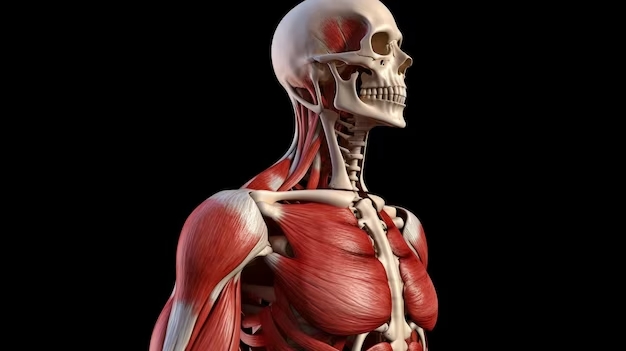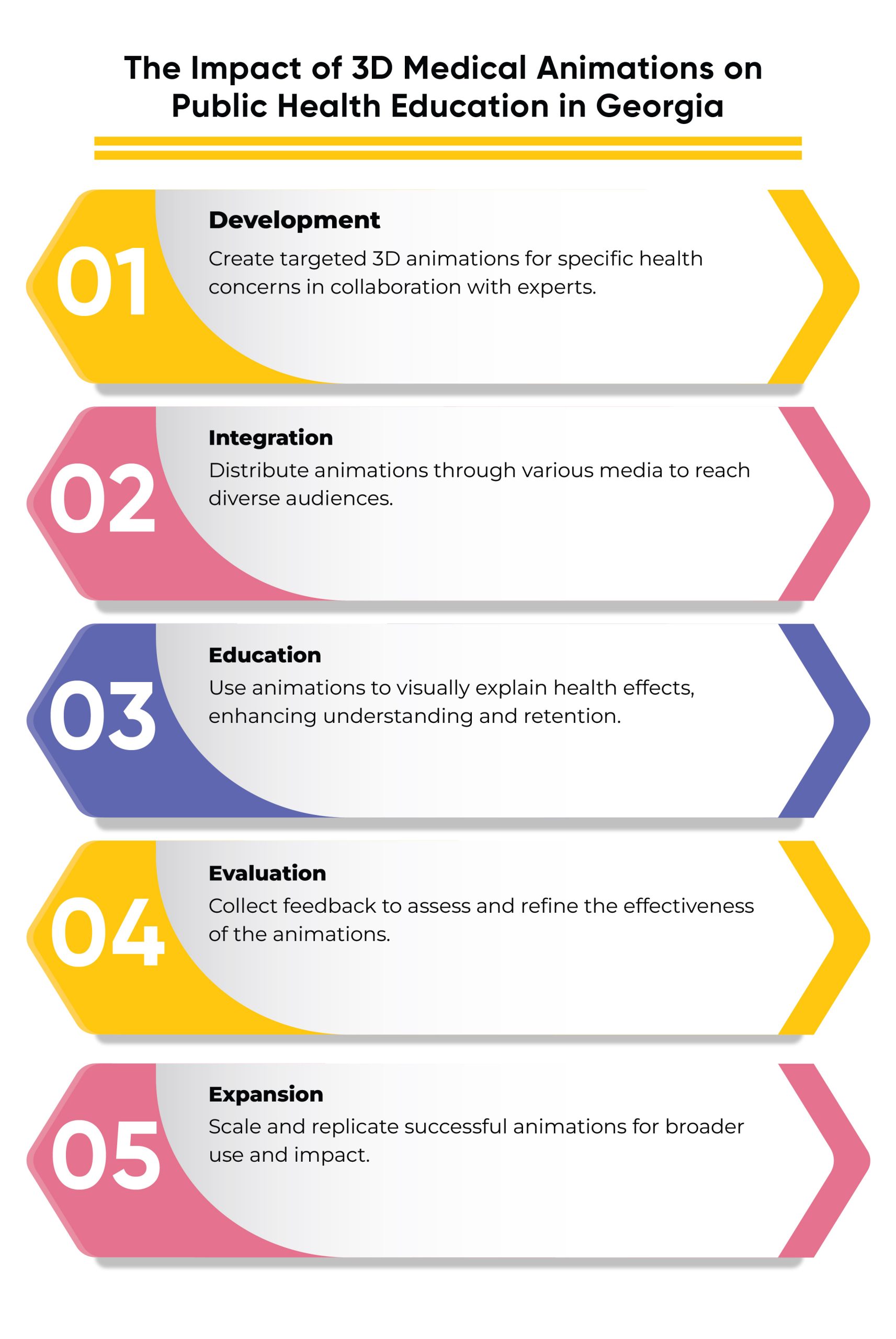Discover the Impact of 3D Medical Animation in Georgia

Particularly in Georgia, 3D medical animation has emerged as a fundamental approach in the always changing field of medical communication. The way that educators, marketers, and medical professionals explain difficult biological processes and medical procedures is being improved by this advanced technology tool. What, though, exactly makes 3D medical animation in Georgia so important? Explore the ins and outs of this fascinating field with this Whimsitoons blog.
The Essence of 3D Medical Animation
Consider trying to explain a complicated cardiac surgery or the molecular details of a medication’s interactions with the human body. The dynamic character of such processes can be missed by conventional techniques like text or static pictures. Here is where 3D medical animation becomes useful, offering a clear, understandable, and incredibly detailed picture of biological and medical topics.
- Enhanced Understanding: Complex information is rendered into digestible, engaging animations.
- Patient Education: Patients gain better insights into their treatments, enhancing their comfort levels.
- Professional Training: Medical students and professionals benefit from precise, clear visualizations of their study subjects.
The Role of 3D Medical Animation in Georgia
Georgia’s healthcare sector is adopting 3D medical animation and pharmaceutical animation services to improve educational strategies, patient care, and marketing efforts. As home to cutting-edge medical research institutions and healthcare facilities, Georgia leverages this technology to provide enhanced educational tools and patient information systems.
Educational Use
In academic settings, from universities to research labs, 3D medical animation companies help clarify concepts that are otherwise too complex to describe verbally or in writing. This technology aids in teaching a variety of topics:
- Anatomical Tutorials
- Surgical Procedures
- Mechanism of Action (MoA) of Drugs
Healthcare Marketing
Marketing professionals within the healthcare industry use 3D medical animation services to effectively communicate the benefits of their products to potential buyers and the medical community.
- Product Demonstrations
- Advertisement of Medical Devices
- Explaining Drug Interactions and Benefits
Advantages of 3D Animation in Medical Fields
Here’s a quick look at why 3D animation is becoming indispensable in healthcare:
- Visual Appeal: Captures attention quickly, making information memorable.
- Detail-Oriented: Shows intricate details of medical concepts that are impossible to capture in other formats.
- Accessibility: Makes understanding complex procedures easier for non-specialists.
3D Medical Animation Techniques
To appreciate the craft of a 3D medical animation company, one must understand the techniques and tools involved in creating high-quality animations. These animations are not just about creating visually appealing content; they require a deep understanding of biology, medicine, and motion graphics. Key techniques include:
- Modeling: Creating 3D representations of anatomical structures.
- Texturing: Adding surface details to give a lifelike appearance.
- Rigging and Animation: Implementing movement to mimic real-life processes.
Regulatory Considerations in 3D Medical Animation
As 3D medical animation becomes increasingly integral to healthcare communication in Georgia, understanding the regulatory landscape is crucial for professionals engaged in this field. The creation and use of 3D animations for medical purposes requires adherence to certain compliance norms and legal considerations, which are addressed in the following points:
Ensuring Accuracy and Compliance
Medical animations are potent tools for education and marketing, but they must be accurate and compliant with medical standards to ensure they serve their purpose without misleading viewers or misrepresenting medical facts. Here’s how creators ensure compliance:
- Adherence to Medical Guidelines: Animations must align with established medical practices and guidelines. This includes accurately depicting medical procedures and correctly representing the mechanism of action of medications.
- Peer Reviews: Prior to public release, animations often undergo a review process by medical professionals to ensure technical accuracy and educational value.
Privacy and Data Protection
When a medical 3D animation company creates animations based on real patient data or case studies, it must navigate privacy laws and regulations carefully:
- Health Insurance Portability and Accountability Act (HIPAA): In the United States, HIPAA compliance is crucial for protecting patient information. Animators working with medical facilities must ensure that any patient data used in animations is de-identified to prevent breaches of confidentiality.
- Data Handling and Security: Secure handling and storage of medical data used during the animation process are mandatory to prevent unauthorized access and data leaks.
Intellectual Property Rights
3D medical animations often involve the creation of unique visual content, which is subject to intellectual property (IP) laws:
- Copyright Protection: Animations, as creative works, are typically protected by copyright, giving the creator exclusive rights to their use. Healthcare organizations must obtain proper licenses when using animations.
- Patent Considerations: In some cases, the methods or technologies developed for creating animations can be patented, which adds another layer of complexity to the use of these technologies in medical education and marketing.
Regulatory Bodies and Standards
In addition to general healthcare and data privacy regulations, specific standards and bodies oversee the production and use of medical animations:
- FDA Oversight: For animations used in drug marketing or as part of medical devices, U.S. Food and Drug Administration (FDA) regulations may apply. This ensures that all promotional material, including animations, provides balanced information and does not make unfounded medical claims.
- International Standards: For companies operating internationally, compliance with global standards like the General Data Protection Regulation (GDPR) for data privacy in Europe may also be necessary.

How 3D Animation is Shaping Healthcare in Connecticut and Beyond
Though Georgia is the center of 3D medical animation, its influence extends to other states as well, such Connecticut, where healthcare animation in Connecticut is becoming more and more popular. This expansion in parallel emphasizes how 3D animation is useful and appealing everywhere in the medical industry.
Table: Comparison of 3D Animation Usage in Georgia and Connecticut
| Aspect | Georgia | Connecticut |
| Academic Institutions | Extensive use in universities | Growing adoption in colleges |
| Healthcare Marketing | Highly developed | Rapidly expanding |
| Patient Education | Advanced custom animations | Increasing interactive tools |
This table highlights the different stages of adoption and utilization of 3D healthcare animation in these regions, showcasing a trend towards broader acceptance and integration into healthcare systems.
Leveraging 3D Animation for Enhanced Healthcare Communication
To fully leverage the potential of 3D animation in healthcare, professionals should focus on:
- Collaboration: Working closely with medical experts to ensure accuracy.
- Customization: Tailoring content to meet specific educational or marketing needs.
- Innovation: Continuously updating and improving animation techniques to keep up with medical advancements.
Conclusion
3D medical animation in Georgia has become a transformative force in healthcare communication, enhancing both understanding and patient care. By delving into fundamental concepts and practical applications in education and marketing, this technology has shown its potential to improve medical education significantly. Techniques such as modeling, texturing, and rigging enable the creation of accurate and engaging animations, while adherence to regulatory and intellectual property standards ensures ethical use. As 3D animation continues to expand beyond Georgia, its role in making medical information more accessible and engaging promises significant advancements in healthcare delivery.
FAQs
Q 1: What is 3D medical animation?
3D medical animation is the process of creating moving 3D images to visualize medical concepts and processes, making them easier to understand and more engaging.
Q 2: How is 3D medical animation used in healthcare?
It's used for educational purposes, marketing of medical products, and patient information.
Q 3: What are the benefits of using 3D animation in medicine?
It enhances understanding, aids in professional training, and improves patient communication.
Q 4: Are there specific tools used for creating 3D medical animations?
Yes, professionals use advanced software like Autodesk Maya, 3ds Max, and specialized rendering tools.
Q 5: How can one get started with 3D medical animation in Georgia?
Interested individuals can begin by studying animation at local universities or by collaborating with studios that specialize in medical animations.
Q 6: How does medical animation in US differ from other regions?
Medical animation US is highly regulated, with companies focusing on compliance with standards like HIPAA and FDA guidelines to ensure accurate and secure patient data handling.










